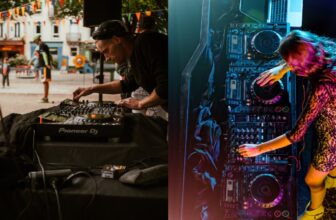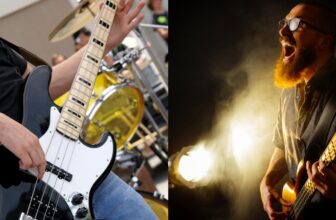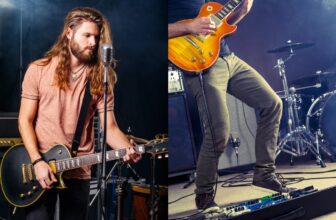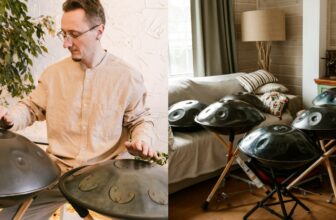19 Instruments in Samba Music
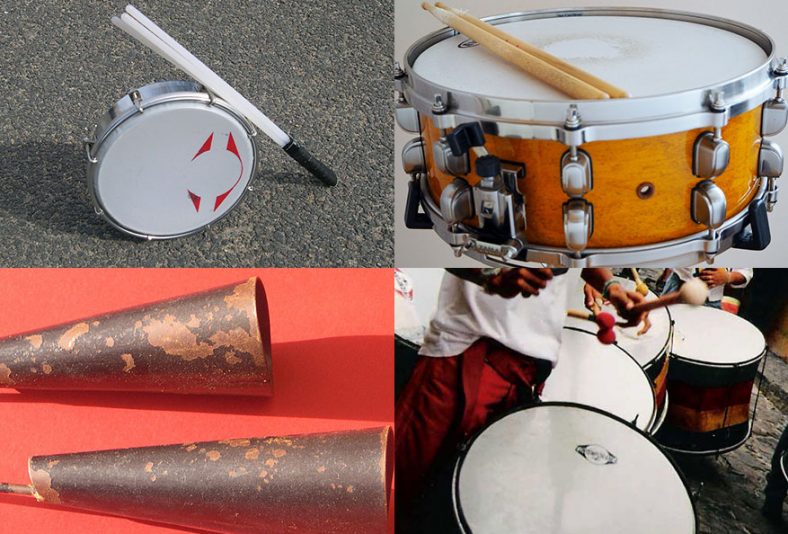
Since the mid-20th century, Samba music has been gaining popularity all over the world, and if you are a fan of this highly energetic genre then you have people of Brazil to thank for it.
African slaves who were brought over to Brazil to work on sugar plantations created Samba by modifying traditional African drumming music.
Samba musicians use a great variety of instruments to create this beautiful music so let’s go over them one by one and see how they contribute to the genre.
Contents
1. Tamborim
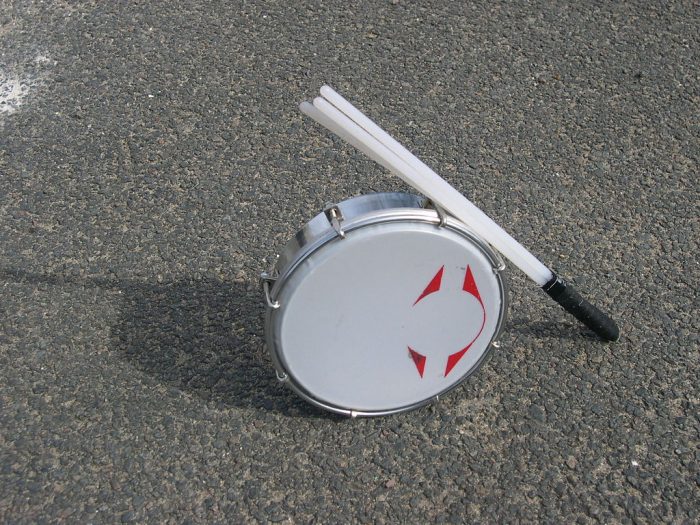
The Tamborim (not to be confused with a tambourine) is a small Brazilian frame drum played with one small wooden drumstick. Samba musicians use it to maintain the underlying groove of a song.
It only measures 6 inches in diameter and it was brought to Brazil by people of Africa several centuries ago. Typically it is played with one small wooden drumstick; Samba musicians use it to maintain the underlying groove of a song.
Although, those who play the sub-style of Samba called Samba batucada beat the tambourine with a special nylon beater.
2. Snare Drum
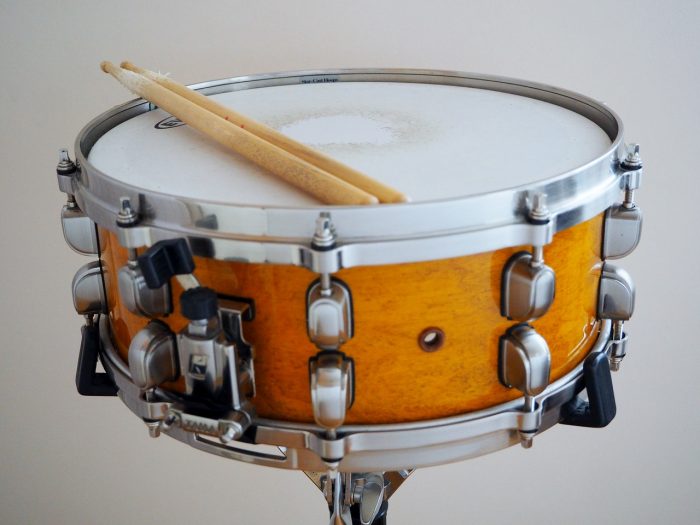
The snare drum is one of the most popular percussion instruments in the world; it is often included in commercially sold drum kits and used in concerts, marching bands, orchestras, parades, etc.
Samba players beat the snare drum with wooden drum sticks which produces a series of sharp sounds. To create a slightly different sound snare drum can also be beaten with a brush or a special multi-rod tool called the rute.
3. Agogo bells
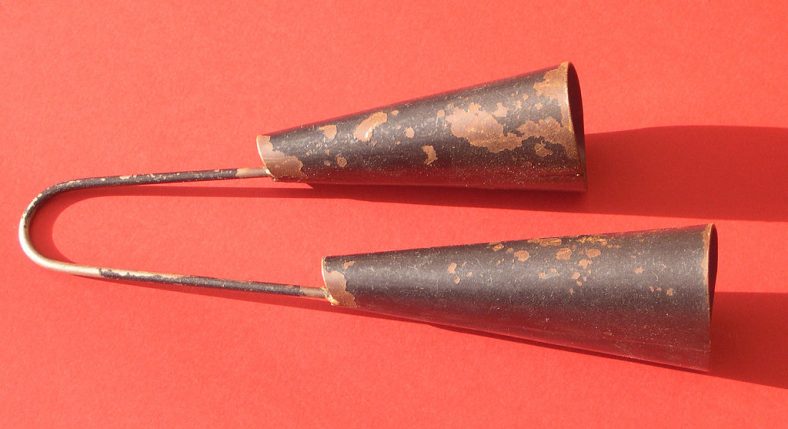
The Agogo bell is a metal bell that is typically beaten with a wooden drumstick. A Samba musician can play either one bell or multiple bells bundled together. In fact, this might be the oldest musical instrument used for playing Samba music.
4. Surdo
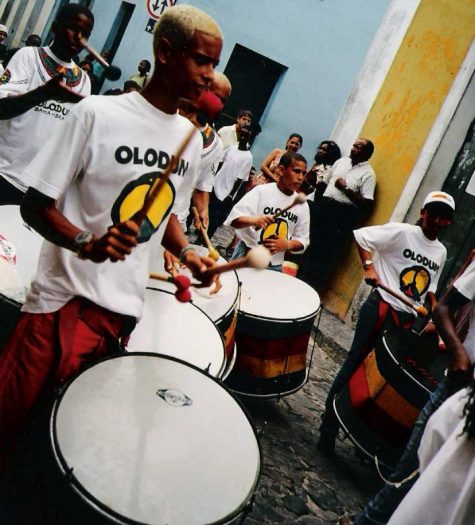
Surdo is a large drum used in many different kinds of Brazilian music (Samba included, of course). This size of surdo varies and can range between 16 inches and 29 inches in diameter. Surdo drum contributes a deep bass sound to Samba music and its primary function is to mark the time for the dancers and other drum players.
5. Ganzá

Ganzá is a type of rattle that is widely used by Samba musicians as a percussion instrument. The instrument has a cylindrical shape and traditionally it used to be woven by hand into a cylindrical basket with leather circles covering the open parts; but nowadays simple metal canisters can also be used as ganzá (in fact, they produce a louder and more clear sound than their handmade counterparts).
Ganza is typically filled with small hard objects such as beads or pebbles. This samba instrument contributes to Samba music with its subtle rhythmic undertone.
6. Cuíca
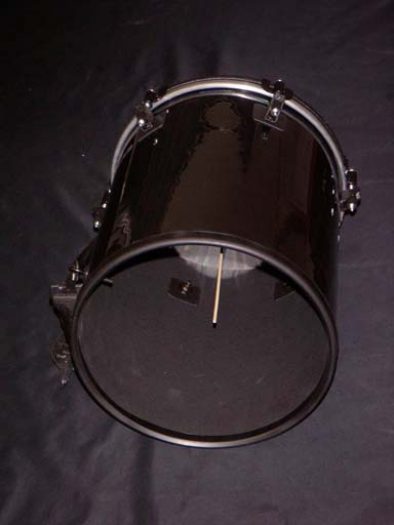
Cuíca Is a Brazilian friction drum. Samba musicians can produce different sounds by adjusting the tension of the drum head. It is also one of the most frequently used instruments during the Rio de Janeiro carnival (and in Samba performances in general).
Cuíca produces a high-pitched sound which is often compared to the sound of a monkey. One of the peculiarities of this drum is that it has a wooden stick attached to the center of the drum head underneath. Cuíca players can produce various pictures and timbres by manipulating this stick.
7. Timbal
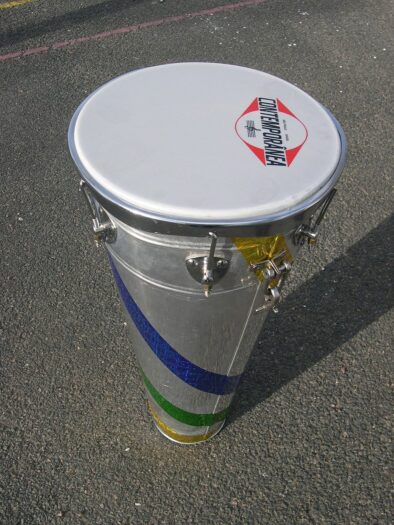
The Brazilian timbal, or timbau as the natives call it, is the percussion instrument that visually resembles a cone with a nylon membrane stretched over the larger opening (the tip of the cone is cut off and left open). It can be of various sizes and is made from either aluminum or wood.
Timbal is the instrument of choice for Samba musicians who want to play loud and rapid solos (they do this by slapping the drum with both of their hands). Overall, timbal produces a strong deep bass sound, and the longer the body of the instrument the deeper the bass.
8. Pandeiro
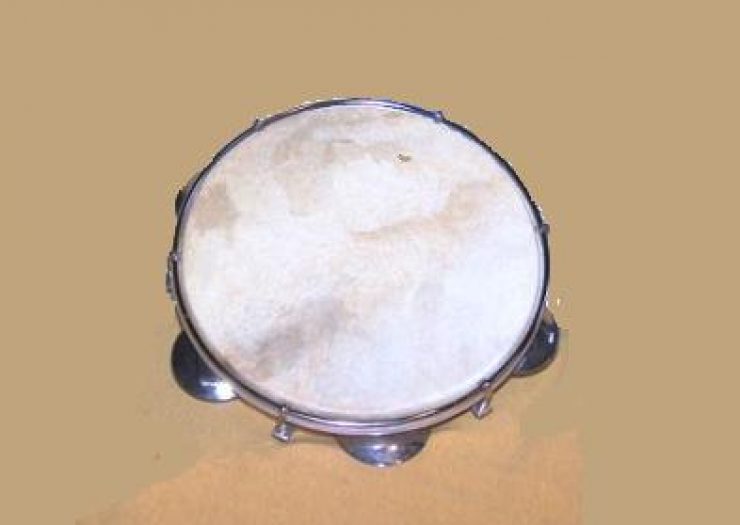
Pandeiro is one of the most popular musical instruments in Brazil. It is a handheld frame drum with metal jingles attached to its circular frame. It is similar to a tambourine, however, unlike that instrument, the jingles of the pandeiro are covered with small metal cups, which produce a dryer and crisper sound.
The playing technique is the same as that of a tambourine, it is held in one hand and struck against the other.
9. Repinique

Although repinique is widely used in Samba music today it originally comes from Germany. It is a two-headed drum that is played with one hand and one wooden drumstick. Typically repiniques are made of metal with nylon heads stretched over both sides.
Samba musicians started incorporating repiniques into their repertoire in the 1950s, but back then it was made from wood and goatskin. One of the main functions of repinique is to help dancers follow the rhythm and the tempo of the song.
10. Tambourine
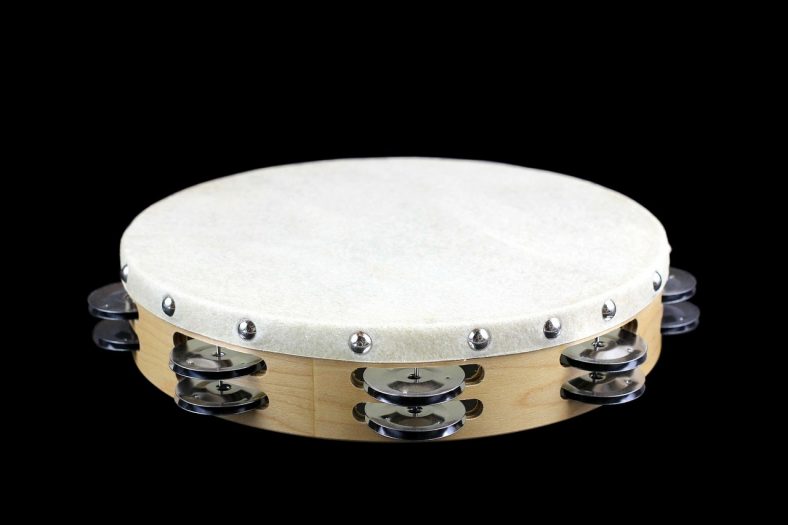
The tambourine is probably the most recognizable percussion instrument in the Samba player’s arsenal. But in case you have never seen one, it is a shallow, handheld drum with metal jingles embedded in it (all around the frame).
One can play the tambourine by holding it in one hand and striking it against the other, by shaking it, or by mounting it on a stand and striking it. You can either shake it at varying speeds to produce different types of sounds.
11. Cavaquinho
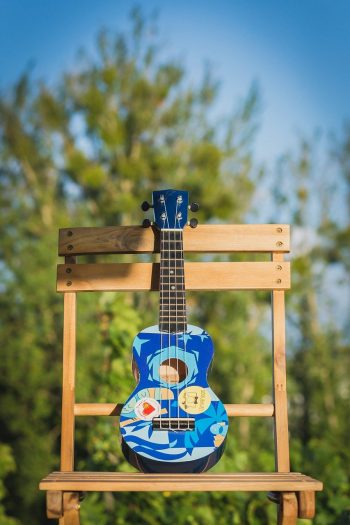
Cavaquinho is a small string instrument that at first glance resembles a guitar or a ukulele. It was invented in Portugal and brought to Brazil by Portuguese colonizers. There are many different varieties of cavaquinho in the world and the Brazilian version is slightly larger than the original Portuguese cavaquinho, and it has four strings.
12. Bass Drum
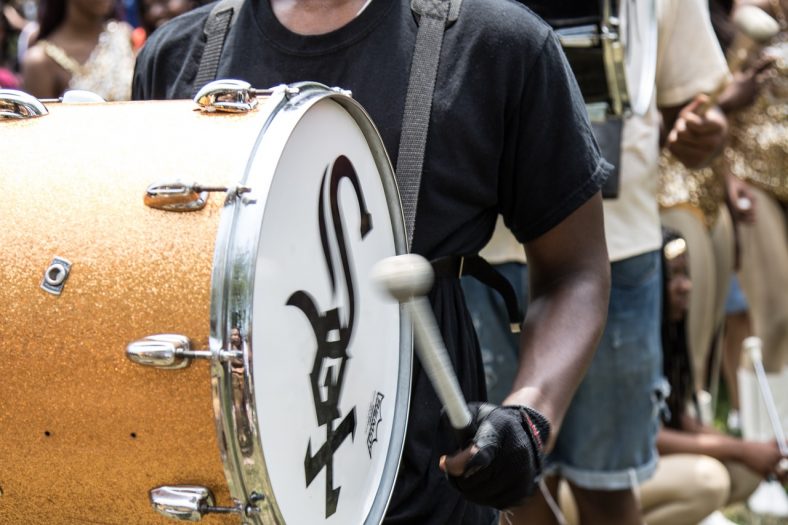
A bass drum (also known as a kick drum) is a relatively large percussion instrument that has a cylindrical shape. The diameter of a marching bass drum is typically greater than the depth.
The sound the drum produces can vary depending on its dimensions and what it is made of. A bass drum is typically played with a mallet and it is used to keep time. Striking the drum produces a low booming sound which is perfect for creating tempo.
13. Wood blocks
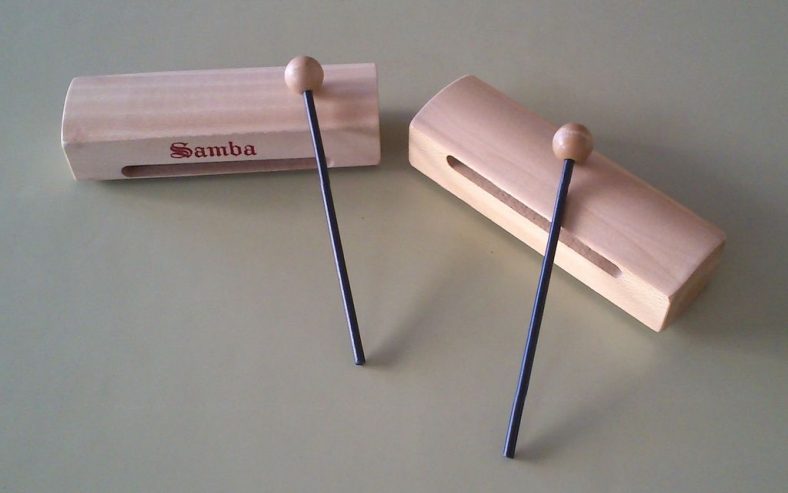
A wood block is a type of wooden drum made out of a rectangular piece of wood with a slit down its longer side. To produce the percussion sound a musician holds a wood block in one of his hands and strikes it with a small wooden mallet.
The size of the wood block may vary and, although traditionally it is rectangular, there are some cylindrical wood blocks, with either one or two cavities that run along the sides.
Striking a wood block with a small mullet creates a sharp crack (instead of a special mallet an ordinary wooden stick can also be used). This crack resembles the sound of knocking on wood except it has a deeper pitch.
14. Chocalho
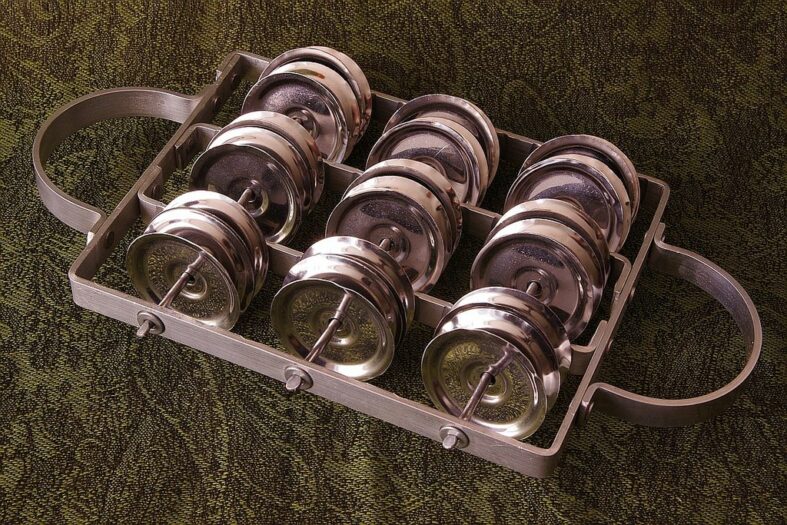
Chocalho is essentially the general name for shakers in Portuguese. This tambourine-like instrument usually has a metal or wooden frame with rows that hold pairs of jingles. You probably get where this is going.
The playing style is very similar to the tambourine with shaking the instrument while also tapping it on the beats. It is a tempo-keeping instrument that adds some spice to Samba music.
15. Caixa
The Caixa is essentially a snare drum with guitar strings on the upper head, as opposed to a conventional snare drum with wires on the bottom head. This is one of the most popular Samba instruments, evolving from the Portuguese marching drum.
This instrument is essential for rhythm-keeping in the genre and features two playing styles. The first includes a belt around the body with the Caixa in the front, and the second is simply on the armrest. The technique is very similar to the marching drum using the traditional grip.
16. Conga
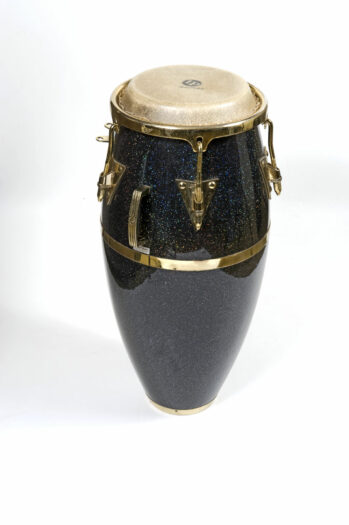
The conga is a very popular instrument that can be found in many music genres such as mambo, reggae, cha-cha-cha, bossa nova, and even Samba. This Cuban instrument is played using the fingers, fingertips, and the palm of the hand. Sometimes, they are played with a mallet.
17. Apito
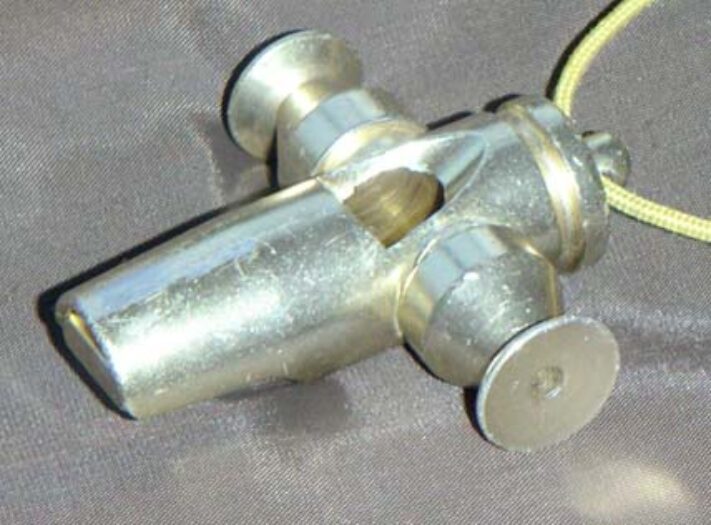
Apito is essentially the Portuguese word for ‘whistle’. This instrument is used to signal transitions during a song and is very popular within Samba ensembles. The Apito, also known as Apito de samba, is capable of producing three notes by covering the side chamber holes, naturally, with different combinations.
18. Berimbau
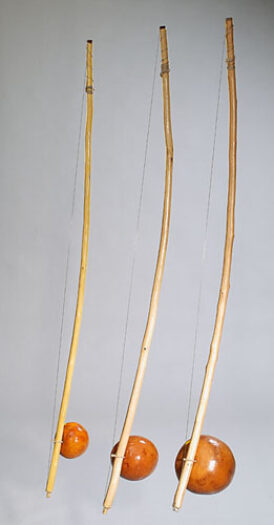
The Berimbau is a single-string, bow-type instrument used in Samba music. It’s made of wood and has a steel string, with a hollowed-out gourd-like fruit at the bottom that is used to amplify the sound.
Even though it looks very simple, it does feature some parts that help with the sound like the Dobrão, which is a small stone (or coin), pressed against the string to change the tone. And naturally, it is played with a small stick (Baqueta).
19. Atabaque
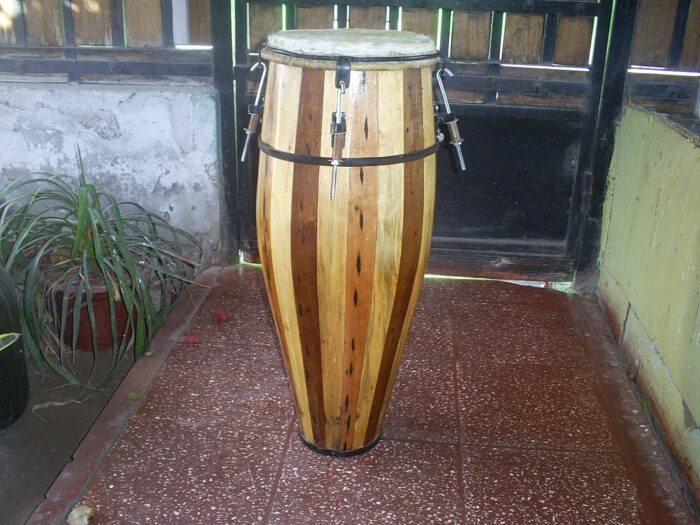
The Atabaque is very similar to the Conga. It is a tall wooden drum used to provide the rhythm and is played with the hands. Made from Brazilian wood (Jacaranda), typically with ropes around the body of the instrument that holds a metal ring, and with a calfskin drum head.
The playing style and technique required are the same as on the congas, primarily with the hands (fingers, palms) and rarely with a mallet.
Where did Samba Music come from?
Samba, as we know it today, was developed in Brazilian slums in the middle of the 20th century. This genre of music uses a great number of percussion instruments (we will discuss each one of them below). Samba was further popularized by the annual carnival in Rio de Janeiro. For six days each year, millions of people from all over the world come together to watch Brazilians in beautiful costumes dance vigorously to Samba music.
In general, Samba music doesn’t follow any specific structure; instead, the players follow the lead of the main drummer. The drummers layer different rhythms on top of each other to create the characteristic texture of samba music.
Now that technology has brought the entire world closer Samba has truly gone international. It is widely used in advertising, TV shows, and movies. And you would be hard-pressed to find any major city without a Samba band.
One of the reasons this genre of music is so popular is that the upbeat tempo grabs the audience’s attention and boosts their mood.
Summary
These are some of the most commonly used instruments in Brazilian Samba music. Although the vast majority of these instruments can trace their origin back to the African continent, over time the population of Brazil adopted some European instruments as well and incorporated them into the genre.
The final result is the highly energetic, fast-paced, and uplifting Samba music that has been making people dance for well over a century. Nobody can resist tapping their feet when they hear Brazilian Samba music, it is simply too much fun!
Tamborim Image (also used in top-left of featured image) by: Alno, CC BY-SA 3.0, via Wikimedia Commons
Surdo Image (also used in bottom-right of featured image) by: The original uploader was Mateuszica at Portuguese Wikipedia., CC BY-SA 3.0, via Wikimedia Commons
Timbal Image by: Alno, CC BY-SA 3.0, via Wikimedia Commons
Cuica image by: By っ, CC BY-SA 3.0, via Wikimedia Commons
Ganza Image by: Alno, CC BY-SA 3.0, via Wikimedia Commons
Wood blocks Image by: Ferbr1, CC BY-SA 3.0, via Wikimedia Commons
Chocalho Image by: Qniemiec, CC BY-SA 3.0, via Wikimedia Commons
Conga Image by: Nationaal Museum van Wereldculturen, CC BY-SA 3.0, via Wikimedia Commons
Apito Image by: User:っ , CC BY-SA 3.0, via Wikimedia Commons
Atabaque Image by: Akuma rasta, CC BY-SA 3.0, via Wikimedia Commons

